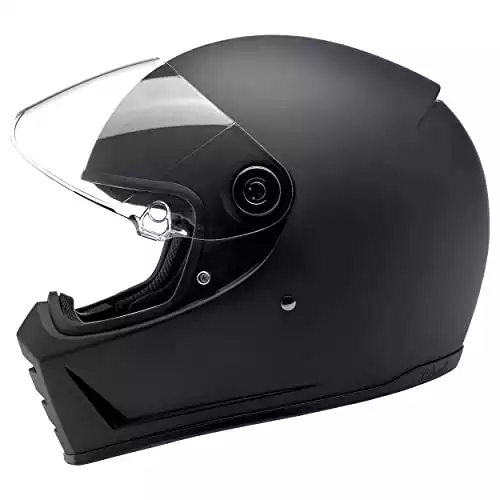Each country sets its own motorcycle helmet safety standards. Manufacturers are required to meet these to ensure that their helmet protects riders in an accident.
DOT is the standard in the USA, and the US Department of Transportation (DOT) enforces it. To be legal for use on the roads in the US, helmets need to be DOT approved.
Save Money On Your Motorcycle Insurance
- You could pay less than £195*
- Compare quotes from 25+ UK providers
- Fill in one form to compare top bike insurers
Are DOT helmets legal in the UK?
No, DOT helmets are not legal in the UK; DOT is a US standard and does not apply in the UK.
What helmets are legal in the UK?
A motorcycle helmet in the UK needs to have the ECE 22.05 certification.
This has recently been replaced with the updated ECE 22.06 standards, but as it stands, helmets that are ECE 22.05 approved can still be legally sold and used on UK roads.
The Economic Commission for Europe is the regulating body that lays out the standards (Regulation No.22) that manufacturers have to meet to produce motorcycle helmets.
The ECE certification is applicable in 47 countries. In the same way, DOT-approved helmets are not legal in the UK; ECE helmets are not legal in the USA.
Can helmets be both DOT and ECE approved?
On occasion, you will find some ECE and DOT approved helmets, such as the Biltwell Gringo.
Things can get confusing as manufacturers may sell the same helmet in both the US and UK under the same name and have approval in both countries.
The helmets will look identical; however, the manufacturer may have had to make an internal adjustment to get the helmet ECE approved.
Therefore, it is best only to purchase a helmet that is explicitly ECE 22.05/22.06 certified; while a DOT approved version of the helmet may be cheaper online, it is still not legal for use in the UK.
Which is better, DOT or ECE?
Both countries’ regulations are in place to ensure motorcycle helmets provide a decent level of protection in an accident.
It is generally agreed that ECE 22.05 and even more so the ECE 22.06 standards require more in-depth testing than the DOT procedures.
A good example of this is to compare the impact tests.
For DOT testing, a helmet can be subjected to an impact roughly in the top third of the helmet upwards.
In theory, manufacturers could strengthen the helmet in this top third to pass the test and neglect the lower part of the structure.
Whereas for ECE testing, the helmet needs to be tested in four locations, not limited to one section.
With confidence, however, it can be said that both sets of standards provide a certification that makes a helmet a far safer (and legal) choice for use than one without.

